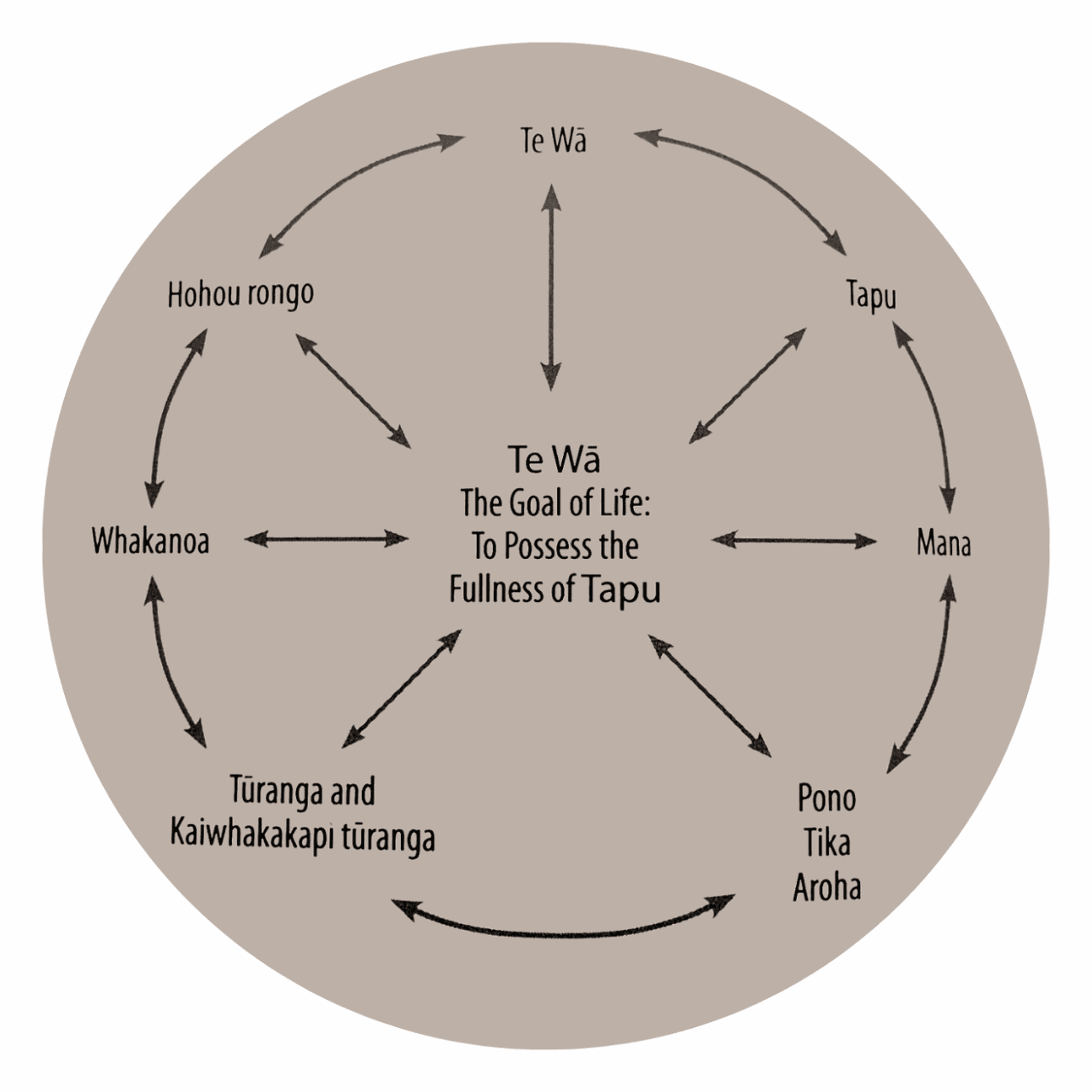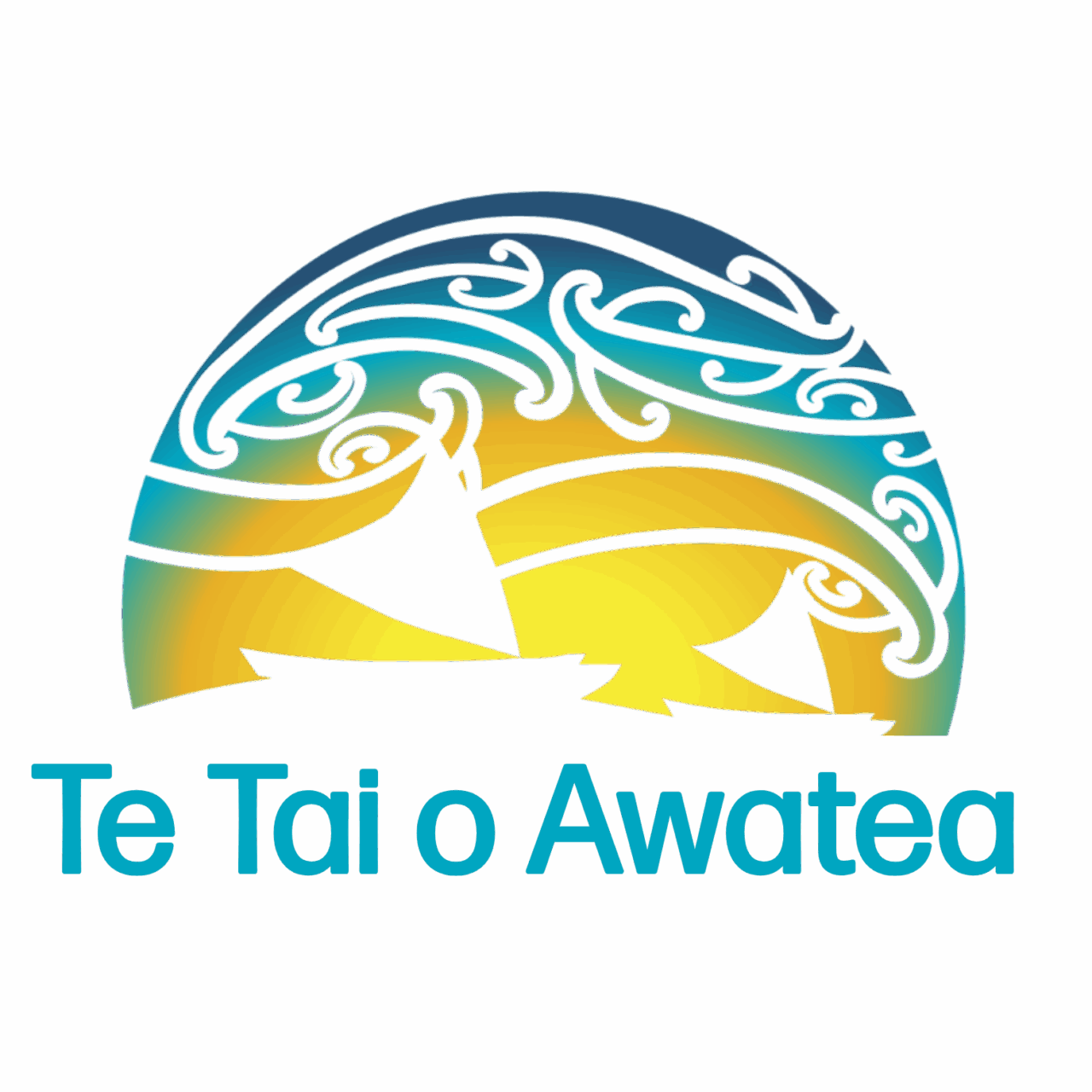
“Ko te whāinga matua kia hohou nei i te rongo hei whakapiki ora, hei whakapiki mauri kia aio te noho ki te ao tūroa nei…”
Hohou = to bind together, lash
hou = new, fresh, to enter
rongo = to listen, feel, taste, smell, perceive, peace, reconciliation
Nā te aha i whakarite ai tēnei kaupapa here?
“He aha te mea nui o te ao? He tangata he tangata he tangata…” – Meringaroto, puhi nō Te Aupōuri. Circa 1820s.
He mea nui, ko ngā here i waenganui i te hapori, arā, ko ngā iwi me ngā whānau. Mā te mirimiri o aua here, ka rapua e te waka o Te Tai o Awatea ngā taonga tuku iho hei painga mō ngā whānau me te hapori. Kei te tuputupu tonu Te Tai-o-Awatea i te māramatanga mō te waihanga me te tuku i ngā hōtaka reo Māori me ngā kaupapa hei whakapakari i te hapori.
Ko te tūmanako kia tū pakari ai ngā whānau ki runga i tō rātou ake mana motuhake, ā, kia ū tonu mātou ki te pānui atu i ngā whakawhitinga kōrero me te meatanga ake, kia mirimiria ngā here nā runga i te tika me te pono, te manaakitanga me te aroha, tētahi-ki-tētahi.
Hei tāpiri ake, ko te tūmanako hoki, ka pupū ake ō-mātou uaratanga i waenganui i ngā kaimahi me te Poari, ā, e mōhio ana mātou, ko ētahi taima, ka raruraru te tangata ahakoa te manako-nui. Heoi, mā te whakatakoto o ēnei kaupapa here, ka takatū hei tūāpapa e takahi ai te tangata, pēnā, horekau e tino puta te hua e manakongia ana.
Ō-mātou Uaratanga:
Mahi tahi
Whakawhirinaki
Aroha, tētahi ki tētahi
Kia ngāwari te tikanga, kia pai te ngākau
Kia pono ki te kaupapa
Kia hohou nei i te rongo
Mō wai tēnei Kaupapa here?
Ka hīpokina tēnei kaupapa here ngā tāngata katoa e raru ana ki roto i ngā mahi tahi me Te Tai o Awatea. Ko te tino pūtake, mehemea ka raruraru te tangata, ka āhei a ia ki te whaaki atu ki tētahi o ngā mema o Te Tai o Awatea, ahakoa ko wai, he kai-tūao, he mema Poari, he kaimahi, he kai-tuku-hōtaka rānei.
He tauira ēnei, pēnā, he mahi, he whakataunga rānei nā Te Tai o Awatea, horekau e tino tika te whakahaere, he totohe, he mahi koretake, ko te takaroa i te tuku pānui me te kōrero, koia tēnā.
Ko ngā tikanga e whai ake nei, he huarahi e ora ai taua tangata i raru nei, mehemea, kāhore e whai hua te hui, kanohi-ki-te-kanohi me ētahi atu o ngā huarahi. Mehemea, ka pā mai te raruraru ki te hunga tamariki, rangatahi rānei, me whai ake pea i te kaupapa here nā Te Tai o Awatea i whakatakoto mō Te Tiaki Tamariki.
Ko te aha, ka whakamanahia e mātou
Ka manawanui mātou ki te whakatau wawe i ngā raruraru e puta ake ki te ao marama. Ā, ka ū tonu ki ngā uaratanga i runga i te ngākau tapatahi me te whai i ēnei o ngā tikanga, ahakoa te aha. Me te mea anō, ka manaakitia tonutia te hunga, nāna te raruraru i whaaki mai, ā, ka āta whakarongo, ka noho tapu āna nei kōrero.
Ko ngā kaupapa here e hāngai ana me ngā ture
- Te Tiriti o Waitangi 1840
- Te Tai o Awatea Safeguarding Children Policy
- Te Tai o Awatea Privacy Policy
- Te Tai o Awatea Health and Safety Policy
- Te Tai o Awatea Whistle blowing policy
- Te Tai o Awatea Trust Deed.
Ko te Arotakenga me te Haepapa:
Ka whakaaetia e te Poari o ngā Kaitarahiti kia kawea tēnei kaupapa here me te mea, ka tukuna atu ngā mahi ki te Kaiwhakahaere. Ia tau, ka tirohia anōtia tēnei kaupapa here haunga anō, ka puta tētahi raruraru, ā, ka tinihia te ture rānei.
Ngā Tikanga/ Procedures:

The following procedures will be worked through step by step as long as both parties are satisfied with the process. If not, continue to the next step. All parties at any time have the right to have their whānau or support person present or supervisor/ advocate.
- We hope that issues can be raised immediately, no matter how small they seem when they first appear. The first step is to contact the Te Tai o Awatea member to explain the situation and give the opportunity to resolve any difficulty through face to face meetings, kōrero or phone call. It is hoped informal conversation in this way will resolve any difficulty. The Te Tai o Awatea member has an obligation to inform Kaiwhakahaere or Chair, if this process has occurred, even if the situation has been resolved in this first instance.
- The next step is to put in writing the details of any difficulty and forward this to the Kaiwhakahaere. If the difficulty is to do with the Kaiwhakahaere- this can be sent to the Chair.
- Te Tai o Awatea will:
- Whakahoki wawe i te Kōrero: Acknowledge the written communication within 5 working days
- Hui: As soon as possible (within 7 days of the acknowledgement) find a time to meet ‘kanohi-ki-te-kanohi’.
- Ko te wā tika nā runga i ngā tohutohu o te Maramataka: We believe it is really important to choose the correct phase of the lunar cycle when holding a “hui-hohou rongo.”
- Karakia: Another important facet of hui is ‘karakia.’ Call on your prayer support and ask for karakia before, during and after. Go in with a “win-win”attitude as opposed to a “win-lose” attitude.
Begin session with karakia and mihimihi prior to actual discussion on the ‘take – issue’ at hand.
- This hui will be a chance to hear more about the situation and attempt to find a resolution.
Two members of Te Tai o Awatea will be present for this hui of which a neutral venue will be chosen. It is advised to have a support person for both organisations, preferably a kaumatua or ‘someone of standing’ within the hāpori. Pa Henare Tate outlines the process of ‘hohou rongo’ in his book, “He Puna Iti i te Ao Marama’.
Whakarongo: The process of speaking will be “tū-atu, tū-mai” where one side speaks and the other listens without interjecting and visa-versa. At any time, if a person or persons chooses not to abide by this tikanga or becomes violent, the hui will be shut down after which, a formal letter/email will be written to the offended party to look at another pathway for hui to occur. See #4.
- Hui Minutes: After any hui, a record of what has taken place will be sent to all parties with the chance for any changes to be made to that record. The record will include details of the conversation, details of the difficulty and any follow up actions that have been agreed upon. Further meetings may take place until all aspects of the difficulty have been resolved.
- If the situation is not resolved through face to face meetings, the difficulty can be communicated by way of written communication to the Board of Trustees. If this occurs the Poari will (depending on what steps have already taken place):
- Reply to the communication within 5 working days giving details of how they intend to manage the difficulty, what has been done so far and what the next stage of the process will be
- Gather any further information needed to be able to assess the situation- this may include hearing from Te Tai o Awatea kaimahi, meeting with the individual who has raised concerns, talking with any other person as seems necessary, and gathering any other information from any other sources that may be required.
- within 20 working days the Poari will send a written reply to the individual detailing what has been done and suggesting a resolution to the difficulty.
5. If the process or remedy offered is not accepted by the individual concerned, or no resolution has been found, an independent mediator may be engaged and a meeting set up within 2 weeks. After meeting with the mediator, the Poari will send a final letter to the individual giving a final assessment of the difficulty, the steps taken to resolve the situation and any remedy that may be appropriate.
6. None of these steps above remove any legal remedy that may be available for resolution of difficulty, or breach of legislation
